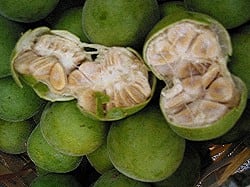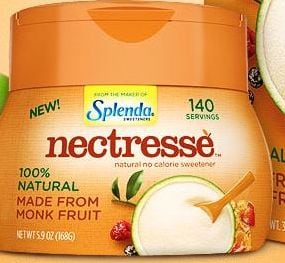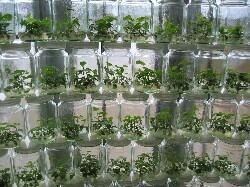While stevia has garnered more column inches, monk fruit has just as much potential given that it is arguably easier to work with and - as a fruit - resonates strongly with consumers, Jeremy Thompson, Global Platform Manager of Sweeteners at Tate & Lyle, told FoodNavigator-USA.
Superior taste profile, easy to use
Tate & Lyle, which has exclusive global marketing and distribution rights for Purefruit while partner BioVittoria handles the supply chain, has well over 1,000 Purefruit samples out in the marketplace and says many customer projects are now approaching launch date.
“Projects include everything from juice products to dairy, frozen desserts and cereals. Customers are finding that it is very easy to use, has a great taste profile without the bitterness you get in some steviol glycosides, and works really well in combination with sugar and stevia.”
Mintel GNPD data shows that Monk fruit sweeteners are now used in a variety of products from Kashi cereals and So Delicious and Arctic Zero frozen desserts, to kids’ juices (Cuties Juice), probiotic supplements (GoLive, Fruity Dophilus), bakery mixes (LC Foods), granola (Bear Naked), mints (Green Tea Mints), whey protein products and liquid sweeteners.
Smaller firms have been quicker off the mark, but some larger firms are now at the stage of doing production scale trials, he said.
“We’re working with everyone from niche players to top-tier players. In six months we’ll see a significant uptick in the number of launches.”
BioVittoria: Costs have come down and continue to come down

And while heat- and acid-stable Purefruit is more expensive than stevia on a weight-for-weight basis, it is now approaching parity on a cost-in-use basis for many applications, claimed BioVittoria chief executive David Thorrold.
For example, in a neutral to high pH product – eg. some dairy products - you can get a lot of sweetness using only a very small amount, while in a more acidic application, you’d need to use more, he said.
“Costs have come down and continue to come down. There is still a lot more headroom for cost reduction. We have done a lot of formulation work and found that it’s very easy to use. You can just drop it in many applications without having to tinker around with flavor masking.”
While improvements are being made to stevia formulations all the time - and Tate & Lyle has itself developed a stevia-based sweetener called Tasteva set for its US launch next year - it is “well-documented that significant portions of the population are sensitive to the bitterness of [leading steviol glycoside] high purity Reb-A”, said Thompson.
“About 40% are highly sensitive and another 40% somewhat sensitive.”
While customers are working with Purefruit in multiple applications from zero-calorie products to reduced sugar options, the fact that it is less bitter than stevia makes it easier for companies to make more significant reductions in sugar without having to spend time on complex flavor masking, he claimed.
Marketing - and how Purefruit fits with Nectresse: The key thing we want people to become familiar with is monk fruit

So how is Purefruit being marketed?
Customers are keen on the fruit message, so many are focusing on that on front of pack, with some also keen to use the Purefruit logo using an ‘intel inside’ type approach, said Thompson.
While the new zero-calorie Nectresse table-top sweetener being rolled out by McNeil Nutritionals includes Purefruit, the Purefruit brand does not appear on pack, he said.
“The relationship we have with McNeil on Nectresse is different to the one we have with them on Splenda.”
However, the Nectresse packaging really homed in on the fact that the sweetener (a combination of Purefruit, sugar and erthyritol) contained monk fruit, he said.
This would drive awareness of monk fruit as a sweetener, which would in turn give Purefruit a boost as an industrial sweetener, he said.
“The key thing we want people to become familiar with is monk fruit.”
Supply chain: Scale up is not a problem

Under the deal with Tate & Lyle, Biovittoria has continued to manage the supply chain for the fruit concentrate, which is produced via a patented process from monk fruit cultivated in south east China using BioVittoria's patented plant varieties, said Thompson.
“We’ve got around 4,000 growers in our network and we can scale up production very rapidly.”
Meanwhile, recovering monk fruit concentrate is easier than extracting high purity extracts from stevia plants, he claimed. “It doesn’t involve high levels of capex or complex processing steps [the fruit is crushed and then mixed with hot water to make an infusion, which is then filtered and spray-dried].
The intensity of the sweetness in the concentrates is directly proportional to levels of a compound called Mogroside V in the flesh of the fruit.
BioVittoria secured a letter of no objection from the Food and Drug Administration in 2010 in response to its Generally Recognized as Safe (GRAS) determination for using its high mogroside V content monk fruit concentrate in a wide range of foods and beverages.
Click here to read our interview with Karl Kramer, Tate & Lyle's president, innovation and commercial development.
Click here to read our interview with open innovation guru Mike Golembieski.
Innovation in action: Click here for a tour of Tate & Lyle's new innovation center in Chicago.
